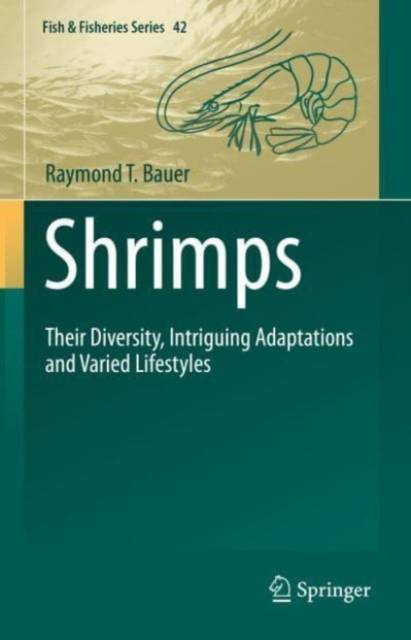
- Afhalen na 1 uur in een winkel met voorraad
- Gratis thuislevering in België vanaf € 30
- Ruim aanbod met 7 miljoen producten
- Afhalen na 1 uur in een winkel met voorraad
- Gratis thuislevering in België vanaf € 30
- Ruim aanbod met 7 miljoen producten
Omschrijving
This book explores the biology of decapod shrimps, a group of animals known to most people as a nutritious and tasty food item. Shrimps are amazingly diverse in size, shape, coloration, behavior and natural history. Shrimp fisheries and aquaculture are a vital part of the USA and world economies. These crustaceans are key ecological and food-web components of marine and freshwater habitats. The book synthesizes information on the taxonomic and ecological diversity of shrimps, the structure and function of shrimp anatomy, antifouling adaptations, coloration and camouflage, reproductive biology, sexual systems, mating systems and behavior, life history strategies, symbioses between shrimps and other organisms, shrimp fisheries and aquaculture, as well as the evolution and phylogeny of shrimps. All chapters are written within an adaptational and evolutionary perspective. Important questions about shrimp biology are asked, and hypotheses for testing in future research are proposed. Thebook is spiced up with personal anecdotes and observations from the author's research experiences.
This book is intended as a comprehensive reference, a "go to" book about the biology of shrimps. The text is scientifically rigorous but written in a style intended for a varied readership. Thus, the book is a valuable resource for budding or working research scientists such as zoologists, aquatic biologists, fisheries and aquaculture professionals, as well as amateur naturalists, aquarium hobbyists and interested laypersons. As the saying goes, "a picture is worth a thousand words," so that the book is amply illustrated with figures and diagrams.The numerous color plates, composed of photos contributed by expert colleagues, make the world of shrimps come alive.
Specificaties
Betrokkenen
- Auteur(s):
- Uitgeverij:
Inhoud
- Aantal bladzijden:
- 720
- Taal:
- Engels
- Reeks:
- Reeksnummer:
- nr. 42
Eigenschappen
- Productcode (EAN):
- 9783031209659
- Verschijningsdatum:
- 9/04/2023
- Uitvoering:
- Hardcover
- Formaat:
- Genaaid
- Afmetingen:
- 160 mm x 238 mm
- Gewicht:
- 1383 g

Alleen bij Standaard Boekhandel
Beoordelingen
We publiceren alleen reviews die voldoen aan de voorwaarden voor reviews. Bekijk onze voorwaarden voor reviews.











